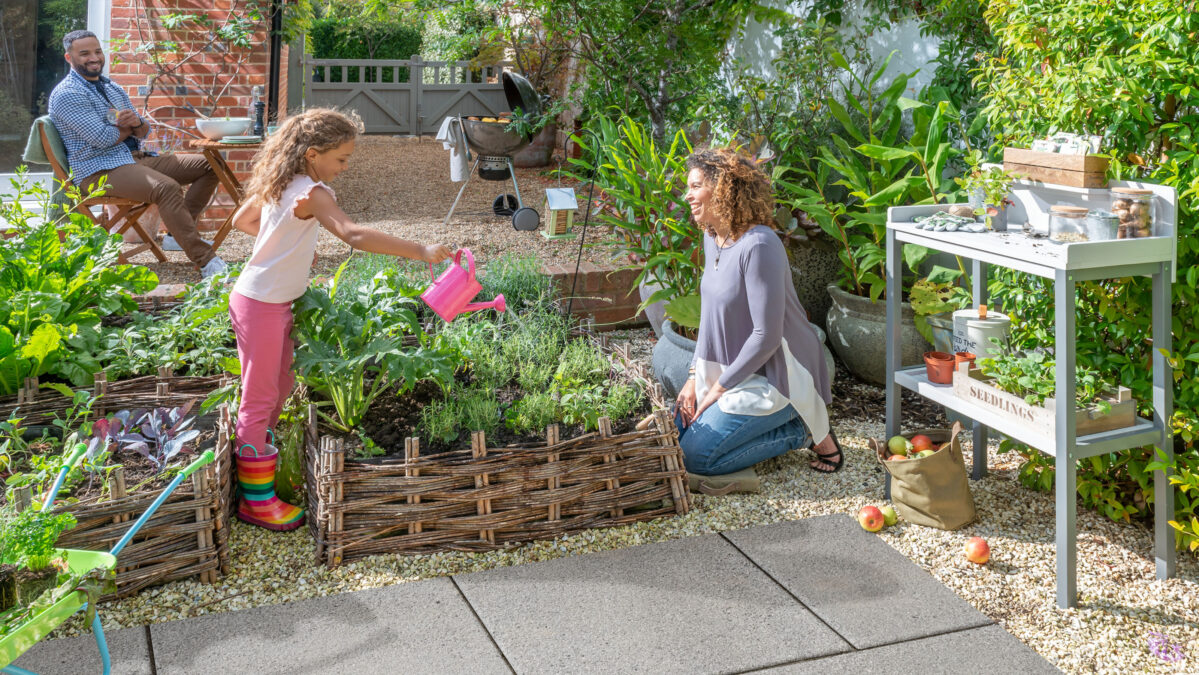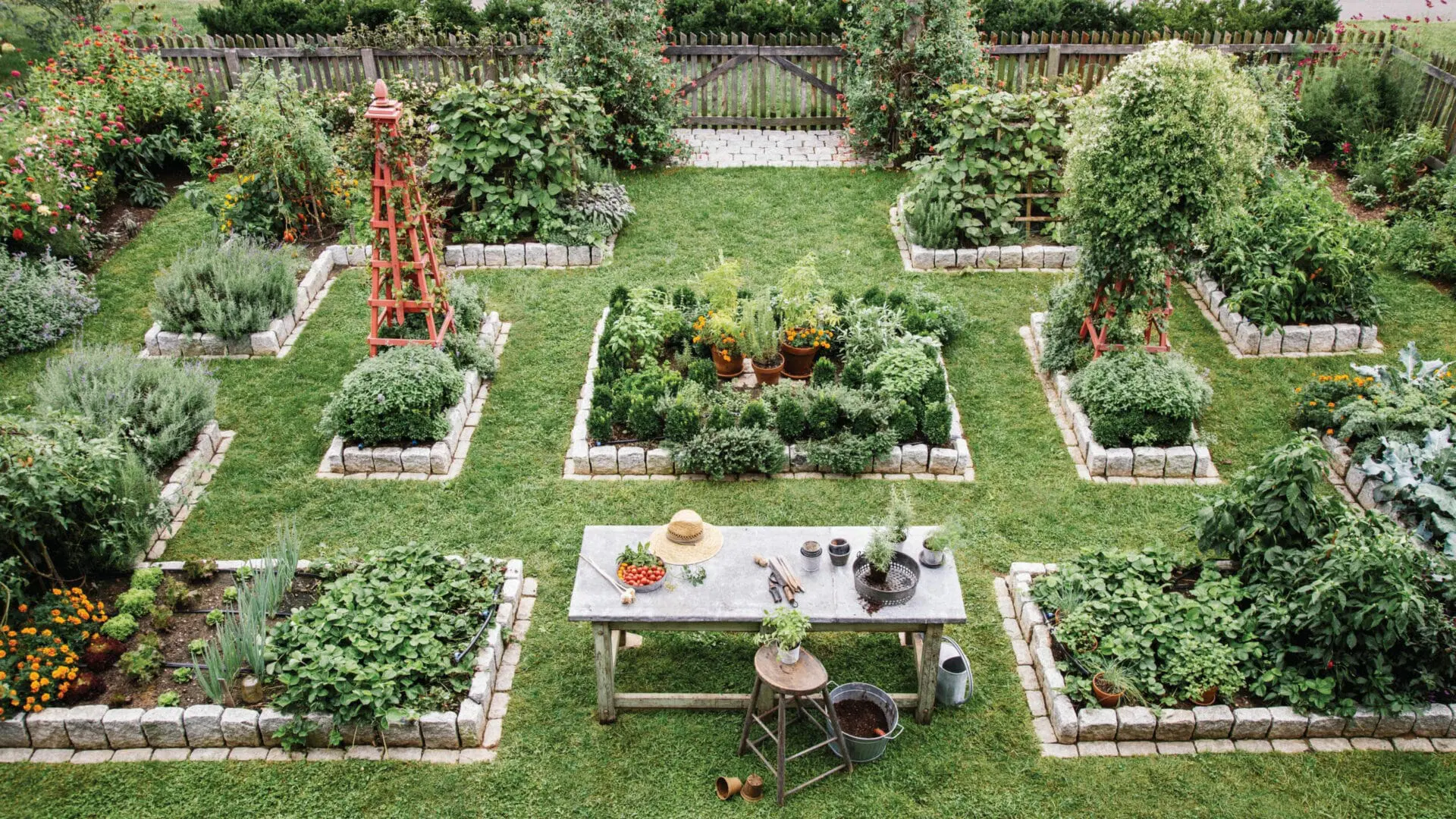Introduction to Kitchen Garden Design
A kitchen garden is a dedicated space where you can grow fresh herbs, vegetables, and fruits for daily culinary use. Unlike traditional gardens, a kitchen garden is designed for convenience, accessibility, and productivity. Whether you have a small balcony, a backyard, or even a windowsill, you can create a thriving kitchen garden with the right design.
The beauty of a kitchen garden lies in its functionality. It allows you to step outside and pick fresh ingredients for your meals, reducing reliance on store-bought produce. Moreover, growing your own food ensures that you consume organic, pesticide-free vegetables and herbs. From vertical gardens to raised beds, there are numerous ways to design a kitchen garden that suits your space and lifestyle.
Benefits of Having a Kitchen Garden
1. Fresh and Organic Produce
One of the biggest advantages of a kitchen garden is having access to fresh, organic produce. Store-bought vegetables often lose nutrients during transportation and storage. When you grow your own food, you can harvest it at peak ripeness, ensuring maximum flavor and nutrition.
Additionally, you have full control over the growing process. You can avoid harmful pesticides and chemical fertilizers, making your food healthier. Imagine plucking a ripe tomato or snipping fresh basil leaves just before cooking—nothing beats that freshness! Kitchen Garden Design
2. Cost-Effective and Sustainable
Growing your own vegetables and herbs can significantly reduce grocery bills. Seeds and seedlings are relatively inexpensive, and with proper care, they yield abundant produce. Over time, a kitchen garden can save you money while promoting sustainability.
By composting kitchen scraps and using rainwater harvesting, you can further minimize waste and create an eco-friendly Kitchen Garden Design. This sustainable approach not only benefits your household but also reduces your carbon footprint.
Choosing the Right Location for Your Kitchen Garden
1. Sunlight Requirements
Most vegetables and herbs require at least 6-8 hours of sunlight daily. When selecting a location, observe how sunlight moves across your space throughout the day. South-facing gardens typically receive the most sunlight, making them ideal for growing sun-loving plants like tomatoes, peppers, and basil.
If your space has limited sunlight, consider shade-tolerant plants such as lettuce, spinach, and mint. Alternatively, you can use reflective surfaces or grow lights to enhance light exposure.
2. Accessibility and Convenience
A kitchen garden should be easily accessible for daily harvesting and maintenance. Placing it near your kitchen door or on a patio ensures that you can quickly grab herbs and vegetables while cooking.
Kitchen Garden Design
For apartment dwellers, container gardens on balconies or windowsills work perfectly. Hanging planters and vertical gardens are also excellent space-saving solutions for small areas.
Popular Kitchen Garden Layout Ideas
1. Raised Bed Gardens
Raised beds are a fantastic option for kitchen gardens because they improve soil drainage, reduce weeds, and make gardening more manageable. You can build wooden, metal, or stone raised beds based on your preference.
Fill them with nutrient-rich soil and compost to promote healthy plant growth. Raised beds also allow better pest control and can be customized in various shapes and sizes.
2. Vertical Gardens
If space is limited, vertical gardening is a smart solution. You can use trellises, wall-mounted planters, or hanging pots to grow climbing plants like beans, cucumbers, and peas. Herbs like thyme, oregano, and parsley also thrive in vertical setups.
Vertical gardens not only save space but also add a decorative touch to your outdoor or indoor area. They are perfect for urban gardeners with small balconies or patios.
Best Plants for a Kitchen Garden
1. Herbs (Basil, Mint, Coriander, etc.)
Herbs are a must-have in any kitchen garden because they are easy to grow and frequently used in cooking. Basil, mint, coriander, rosemary, and thyme can be grown in pots or directly in the ground.
Most herbs require well-draining soil and moderate sunlight. Regular pruning encourages bushier growth, ensuring a continuous supply of fresh leaves.

2. Leafy Greens (Spinach, Lettuce, Kale)
Leafy greens are fast-growing and perfect for beginners. Spinach, lettuce, and kale can be harvested multiple times, providing a steady supply of nutritious greens Kitchen Garden Design.
These plants prefer cooler temperatures, making them ideal for spring and fall gardens. You can also grow them in partial shade if your garden doesn’t receive full sun.
Soil Preparation and Fertilization Tips
1. Choosing the Right Soil Mix
Healthy soil is the foundation of a productive kitchen garden. A well-draining, loamy soil enriched with organic matter is ideal for most vegetables and herbs. You can prepare your own mix using garden soil, compost, and perlite or sand for better drainage.
Avoid using heavy clay soil, as it retains too much water and can lead to root rot. If your soil quality is poor, consider using raised beds or containers with high-quality potting mix.
2. Organic Fertilizers and Composting
Instead of chemical fertilizers, opt for organic options like compost, vermicompost, or manure. These natural fertilizers improve soil structure and provide essential nutrients to plants.
Creating a compost bin with kitchen scraps (vegetable peels, eggshells, coffee grounds) is an excellent way to recycle waste and enrich your garden soil. Regularly adding compost ensures long-term soil fertility.
Watering and Maintenance Practices
1. Proper Watering Techniques
Overwatering and underwatering are common mistakes in kitchen gardening. Most vegetables and herbs prefer consistently moist soil but not waterlogged conditions.
Drip irrigation or soaker hoses are efficient watering methods that deliver water directly to the roots, reducing evaporation and water waste. Early morning watering is best to prevent fungal diseases.
2. Pest and Disease Management
Natural pest control methods like neem oil, garlic spray, and companion planting can keep harmful insects at bay. Marigolds, for example, repel aphids and nematodes when planted near tomatoes Kitchen Garden Design
Regularly inspect plants for signs of disease (yellowing leaves, spots) and remove affected parts immediately to prevent spread. Crop rotation also helps in reducing soil-borne diseases.
Seasonal Kitchen Garden Care
1. Spring and Summer Gardening
Spring is the best time to plant warm-season crops like tomatoes, peppers, and eggplants. Ensure proper mulching to retain soil moisture and suppress weeds during hot months.
Summer gardens require frequent watering and shade protection for delicate plants. Using shade cloth or planting taller crops (like corn) to provide shade can help.
2. Fall and Winter Gardening
Cool-season crops like broccoli, carrots, and radishes thrive in fall. Extend the growing season by using row covers or cold frames to protect plants from frost.
In winter, focus on indoor herb gardens or microgreens if outdoor gardening isn’t feasible. Grow lights can help maintain plant growth during shorter daylight hours.
Creative Kitchen Garden Design Ideas
1. Container Gardening
Containers are versatile and allow you to grow plants in limited spaces. Use colorful pots, recycled buckets, or even old tires to create a unique kitchen garden.
Ensure containers have drainage holes and are large enough for root growth. Group plants with similar water and light needs together for easier maintenance.
2. Edible Landscaping
Blend beauty and functionality by incorporating edible plants into your landscape. Plant strawberries as ground cover, use rosemary as a fragrant border, or grow fruit trees as focal points.
This approach maximizes space while creating an aesthetically pleasing garden.
FAQs
1. What is the easiest vegetable to grow in a kitchen garden?
Lettuce, radishes, and cherry tomatoes are among the easiest vegetables for beginners. They grow quickly and require minimal maintenance.
Conclusion
Designing a kitchen garden is a rewarding experience that brings fresh, homegrown food to your table. Whether you opt for raised beds, vertical gardens, or container setups, the key is to start small and expand as you gain confidence.

